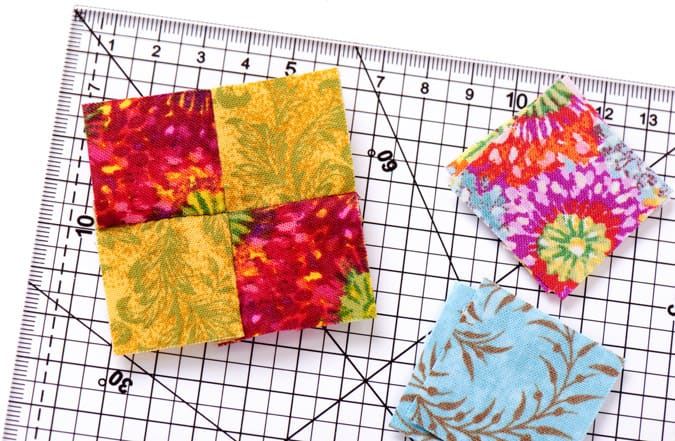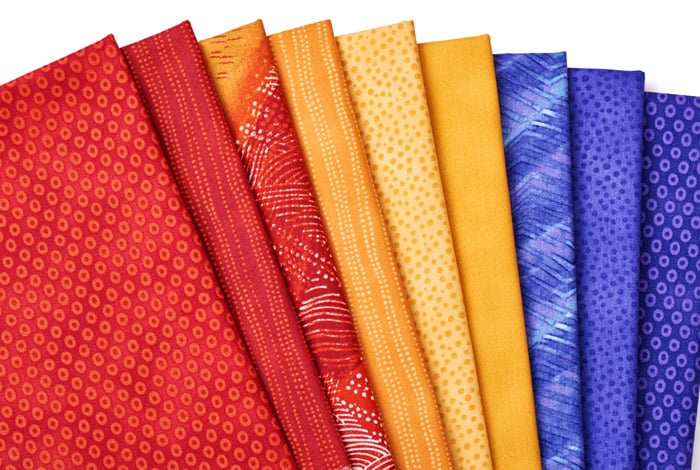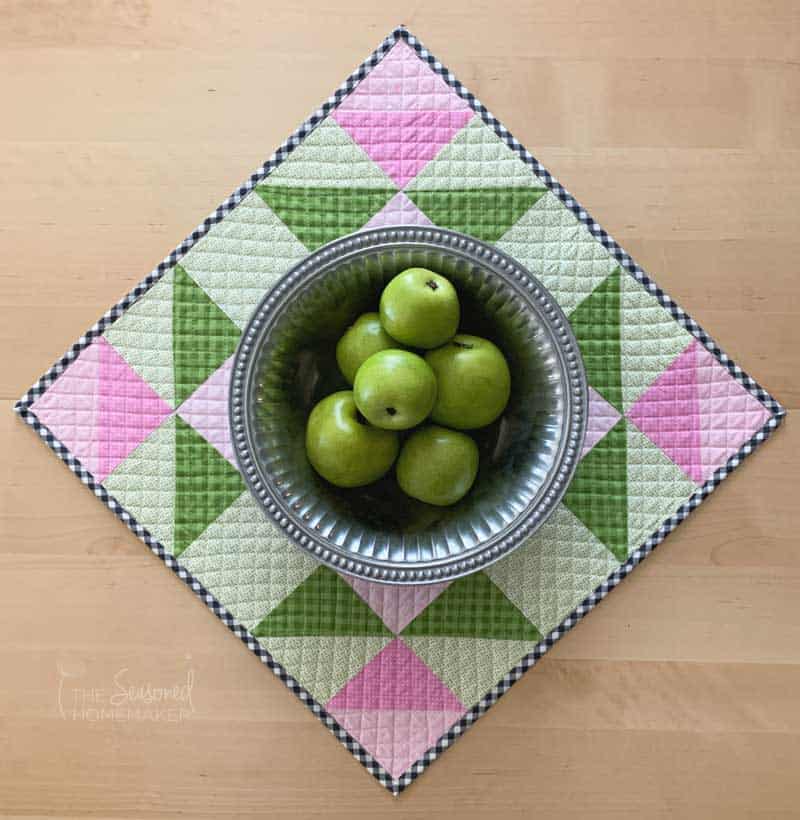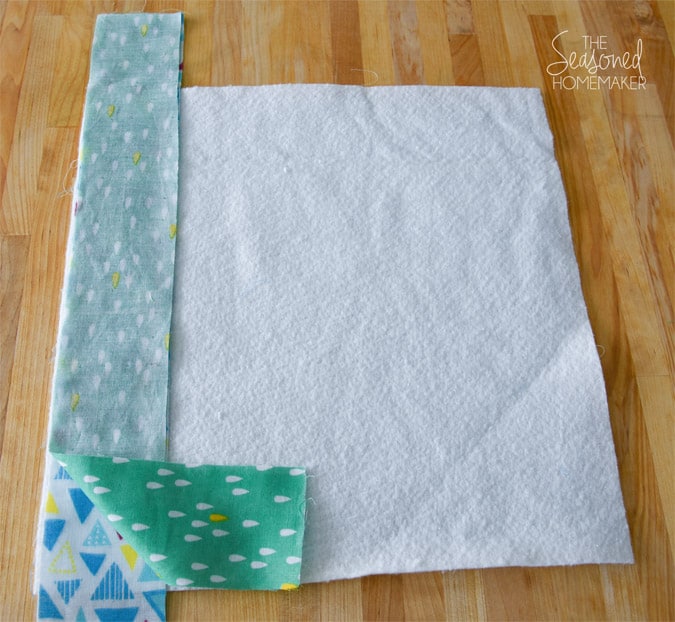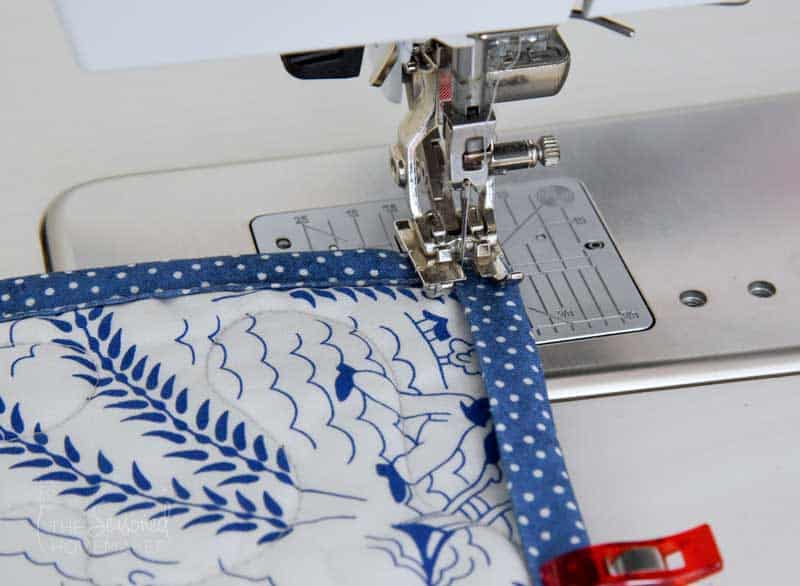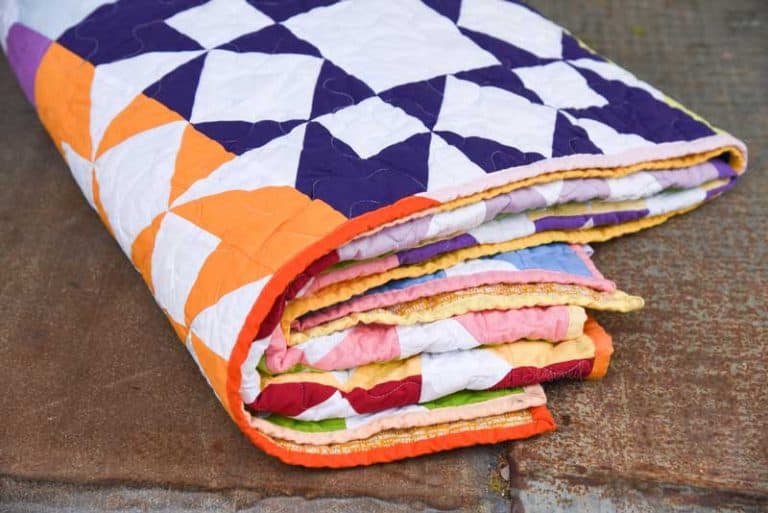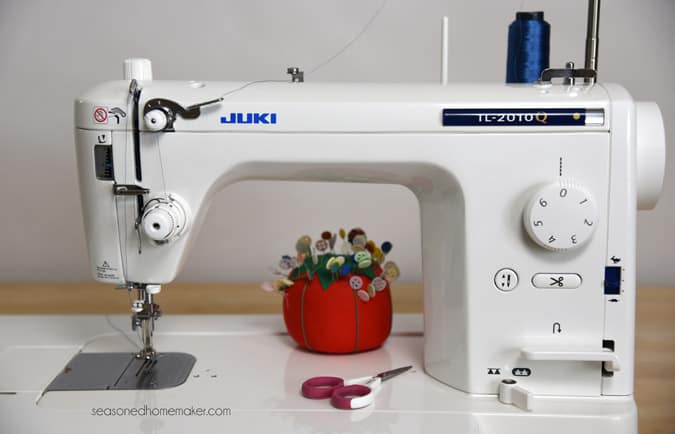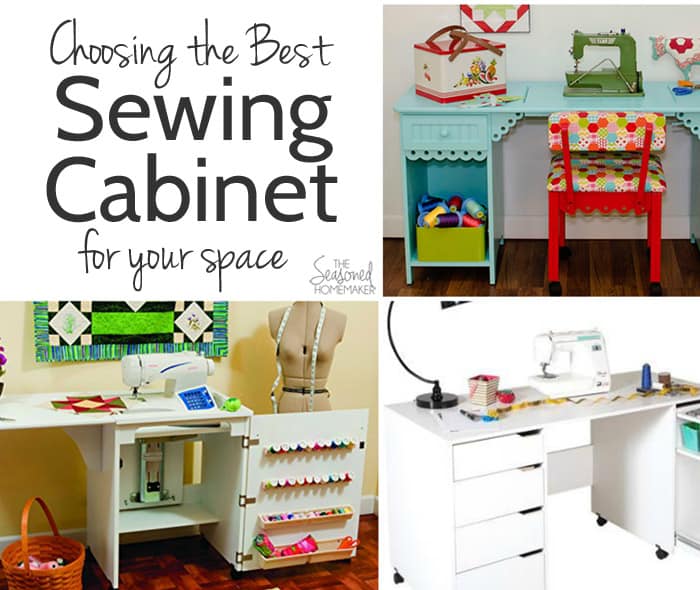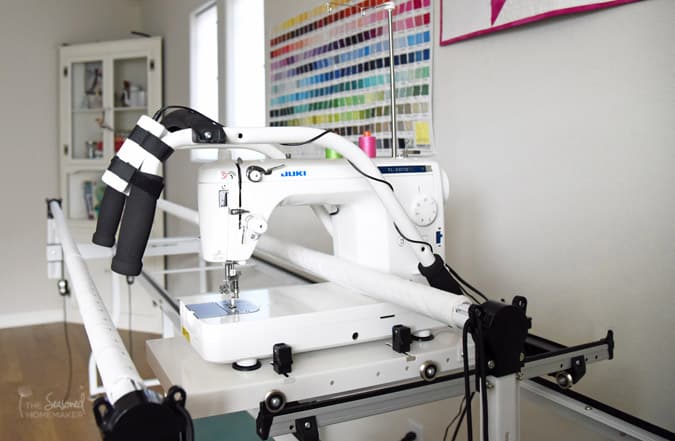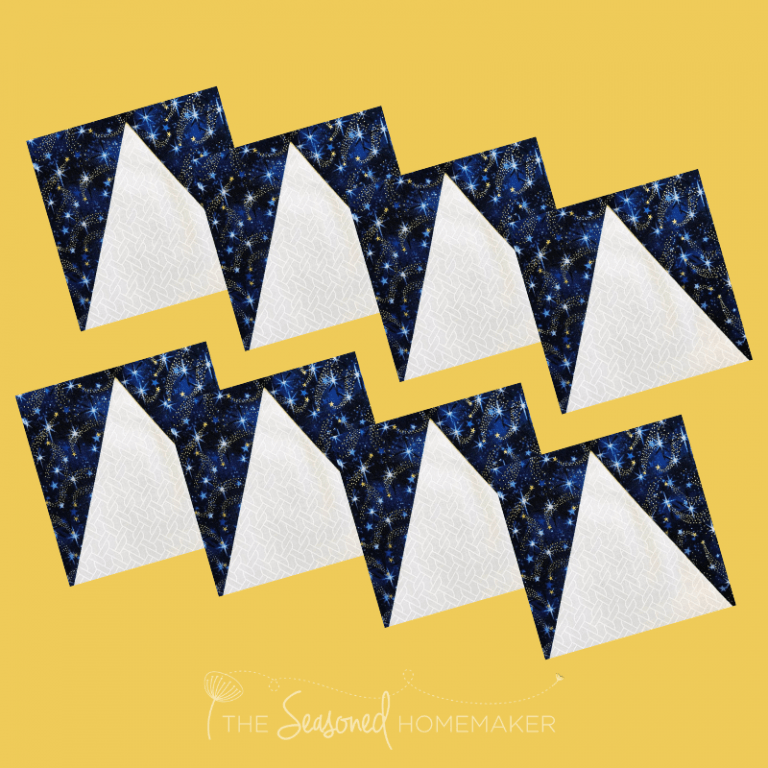Learn the Basics of Quilting
This post may contain affiliate links which won’t change your price but will share a commission.
Anyone can learn to quilt! The secret is knowing where to start. Here’s a simple set of basics to help you prepare to learn the basics of quilting.
Once you understand a few of these basic details you’ll be ready to tackle your first quilt.
Learn the Basics of Quilting
You’ve likely seen amazing quilts made from a ga-zillion teeny-tiny pieces intricately sewn together to create an unbelievable design. If you’re like me, you are awe-inspired and overwhelmed at the same time. The words, “How did someone do this?” usually escapes my lips upon inspecting these masterpieces.
Remember, an amazing quilt was crafted by someone who once was a quilting novice that didn’t own the nicest quilting tools, a fancy sewing machine, or have access to YouTube or Craftsy.
Where To Begin Your Quilting Journey
Before beginning your quilting journey you will need some very specific tools and supplies. If you’ve been sewing for a while, you may already own a few of these. I assure you that investing in some of these supplies will help you quickly grow your skills.
Here’s a list of a few basic tools you will need to start quilting.
- Rotary Cutter
- Cutting Mat
- Acrylic Ruler
You’ll need a few more supplies that are both necessary and useful, but they will take you from barely a novice to confident beginner in no time. Check out this post: Beginner Quilting Supplies.
How to Quilt on a Budget
It’s no secret, quilting can be expensive; but, it doesn’t have to break the bank. It’s possible to make beautiful quilts on a budget; all you need to know are a few thrifty tips.
If you’re on a tight budget, try a few of these dollar-stretching tips to get started.
- Visit thrift stores and buy extra-large clothing to cut up into quilt squares
- Let friends and family know you’re starting to quilt. They may hand you a stack of fabric or loan you a sewing machine.
- Look for cutting mats and acrylic rulers at local thrift stores.
- Download free patterns from the internet.
- Check out YouTube for video instructions.
Click here for more useful tips for How to Quilt on a Budget.
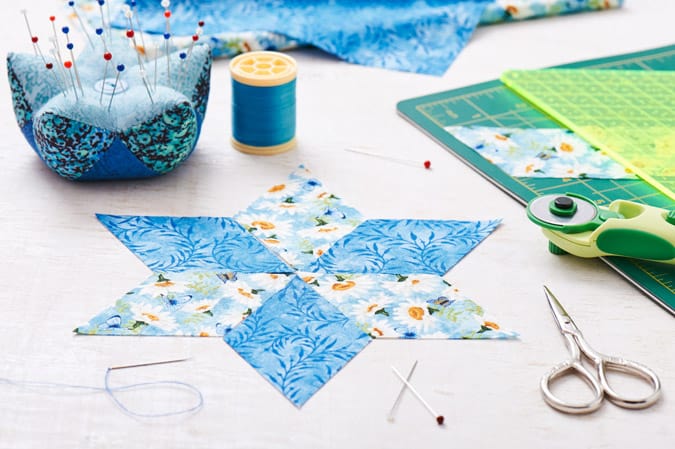
It’s All About the Fabric
If you’re going to quilt, you will need fabric. Unfortunately, choosing fabric for a quilt can cause the best of us to freeze up and get a serious case of fabric paralysis. I know, because this happens to me almost every time I walk into a quilt shop. And, don’t get me started with online shopping.
Fortunately, you don’t need to be an expert to overcome this and make good fabric decisions. If you take a little time to look at a fabric collection, you will see that most will contain a combination of the following:
- Large-scale print
- Medium scale print
- Small-scale print
- Geometric or Striped variation
- Random Dots
Knowing this will help you better choose fabrics for your next quilt without limiting yourself to a single collection. Click this link to learn How to Choose the Best Fabric for a Quilt.
If color theory is your biggest obstacle to choosing fabrics, I have a solution. This FREE class on color theory changed the way I approached color in quilts. It’s a great course which covers the subject of how colors work together in quilts.
Cutting Out the Fabric
If you think choosing fabric is a challenge, making that first cut can equally side-line your quilting ambitions. The most basic step in Quilting 101 is how to use a rotary cutter and mat. Click here to read my post on How to Get Perfectly Straight Fabric Cuts. Once you have the right tools and know how to use them, the rest is simple.
Understanding Quilt Batting
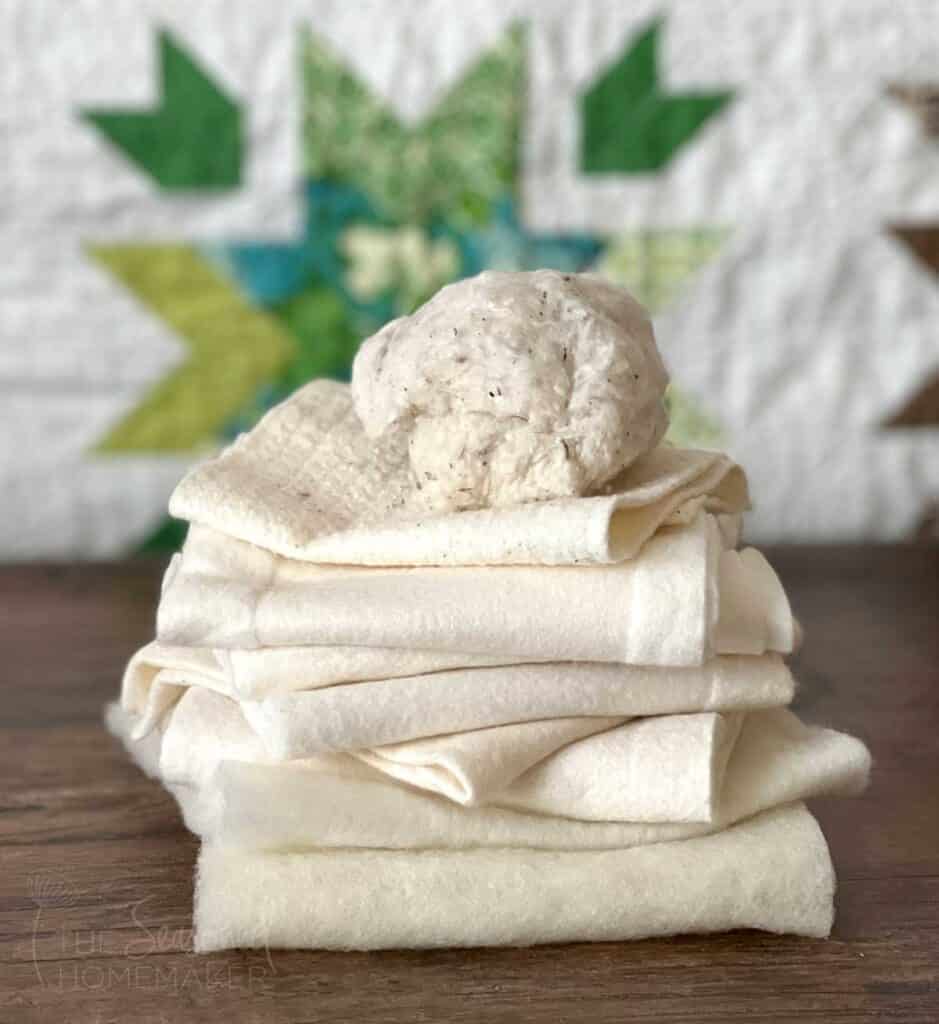
You will need quilt batting which will be sandwiched between the quilt top and the quilt back. Type in the words, “quilt batting” into the search box on Amazon, and you will be astonished at how many options exist. Unbleached cotton batting, polyester batting, thin loft, thick loft, plush, bamboo, etc. The list is extensive and I believe that it can be somewhat overwhelming for a new quilter.
For anyone new to quilting, I recommend Warm & Natural Cotton Batting because it is easy to find and reasonably priced. That said, you have to watch out for one thing with this batting. It has a clean side and a dirty side. The clean side is free of any manufacturing residue, but the dirty side will have small bits and pieces from processing and these will show through on light backgrounds. If your quilt has a lot of light colors, then I would recommend getting Warm & White Cotton Batting.
This post on my website has covers every detail about quilt batting. You will know exactly which batting you should use for any quilt.
It Starts with a Basic Block
You have your quilting supplies and have confidently purchased a little fabric and batting. Now what?
The best place for a quilting beginner your next step is to make a few blocks. There are two very simple blocks that are the basis of any patchwork quilt.
Start by practicing your cutting skills. Cut out several same-size squares and then arrange them in a way that is pleasing to your eye. There is no right or wrong here. It is your quilt.

Once you’re pleased with the arrangement, begin sewing the pieces together to create rows. Now, arrange the rows however you prefer and start connecting them into blocks. See how easy it is!
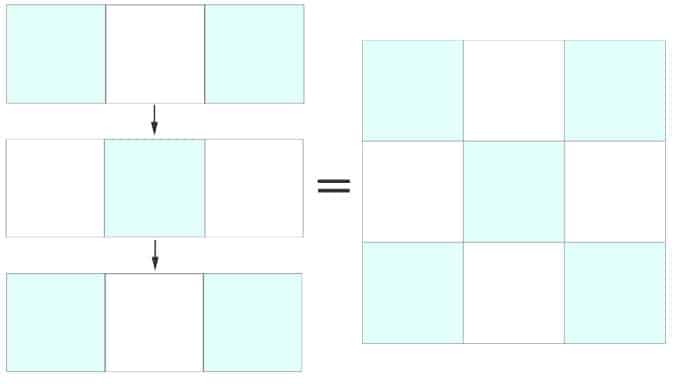
Techniques for Better Quilts
If you are new to quilting or want to learn more about quilting you need to know about the Half Square Triangle, commonly referred to as the HST. An HST is one of the most basic quilting blocks and can be used to create very complex quilts. From this technique alone, a ton of designs can be created like Chevrons, Flying Geese, Herringbone, and ZigZag Path.
To learn more about this simple technique, click to read Learning About Half-Square Triangles.
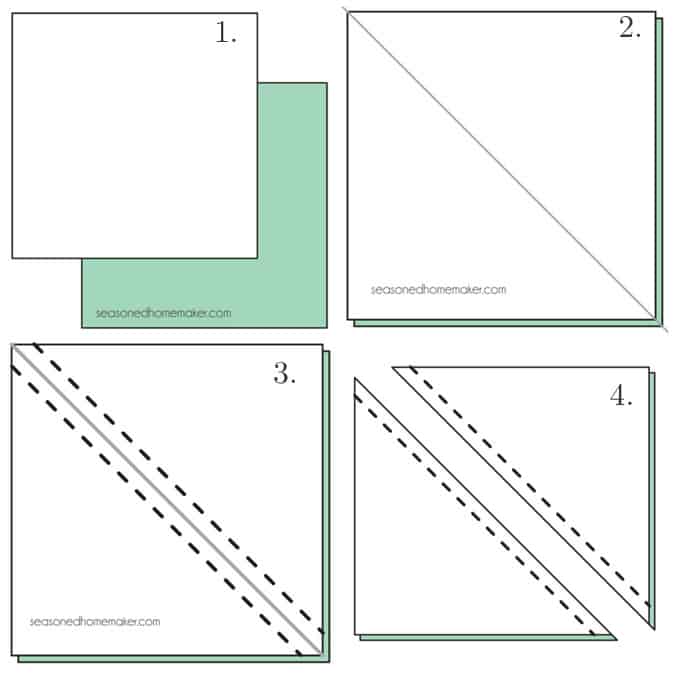
Basting the Quilt
Does this sound familiar? You start your day planning to finish that special quilt for a loved one’s upcoming birthday. The clock ticks away; daily life keeps you from sitting down to sew. By 7pm you’re so exhausted you hope tomorrow will be different.
I have a few time-saving tips for finishing quilts. This video on how to baste a quilt is one of my all-time favorite tips for finishing a quilt.
Quilting the Quilt
I know a lot of people who quilt by checkbook, meaning they send their quilts out to a longarm quilter. For someone just starting down the quilting journey, paying someone to do the quilting might not be an option.
One way to save both time and money is to quilt your own quilts. This can be as simple as you want with straight line quilting or an all-over meander.
One of my favorite quilt designs is a diagonal grid spaced 3/4″ – 2″ apart. To keep the fabric layers from shifting I recommend using a Walking Foot. This is quick and always looks nice.
>>> Read more about the Walking Foot here
Quilt As You Go
If you are limited on space or time there is a quilting method called Quilt As You Go. The Quilt As You Go technique (QAYG) is a way to quilt blocks before putting a quilt together.
It simplifies quilting for beginners because it is an easy way to join quilted pieces by machine. Instead of handling bulky quilts, you can quilt your project one block at a time.
Below are two videos that show how easy it is to QAYG. The first video shows how to make a quilt block using the QAYG method.
The second video demonstrates the QAYG method using fabric strips and is ideal for using up jelly roll scraps.
Binding the Quilt
The final step is binding the quilt. I have a tutorial with a video that shows you the best way to Machine Bind a Quilt.
There has never been a better time to take up the hobby of quilting. Supplies are easy to come by and there are a ton of class options available online or locally. Quilting is a multi-generational hobby that isn’t restricted by age or gender. The greatest benefit, though, is the friends you’ll make along the way.
Oh, and don’t forget to regularly check this post for updates. And, remember to subscribe to The Seasoned Homemaker where you’ll receive my latest quilting posts!
Happy Quilting!




